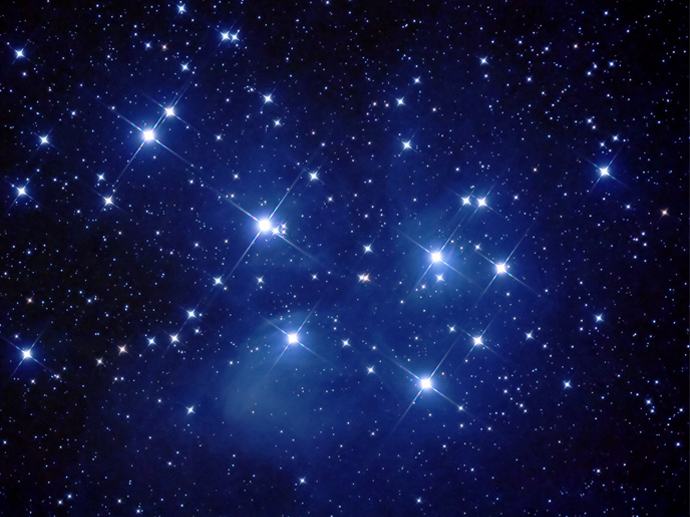-

Astronomy compels the soul to look upward and leads us from this world to another – Plato
-Planet Earth is at the center of an observable universe with a 13.7 billion light year radius. Just so you get an idea of what that means, the Moon is only 0.0000000406 light years away (about 357,000km, if that makes it any easier). Paul Klauninger is an astrophotographer who captures some of the beauties of our galaxy, and has been doing so for over 20 years.
Astrophotography remains one of the most complicated forms of photography, but with today’s technology we get images not even Galileo or Newton would have even dreamt of. The Stimuleye catches up with Paul to get a better understanding on this ancient fascination for the Cosmos.
M45 - Pleiades Star Cluster. Photography by Paul Klauninger.
Miguel Batel: You must be happy winter is over. Last time we went out to the field must have been one of the coldest experiences I’ve ever had.
Paul Klauninger: I have mixed feelings about the winter really. While it can be very challenging to operate your equipment (and your fingers, for that matter) when it is –20o C, there are also a number of benefits. In the winter, the nights are much longer than the summer, so you can do much longer observing and imaging sessions. Also, the air tends to be cleaner, containing less dust and water vapour. That makes it better for imaging. And in the winter, you see a different part of the sky than in the summer, so you can see a completely different collection of celestial wonders. Finally, there are no mosquitoes or black flies in the winter, and that’s always a good thing.
MB: Being mostly subjects you can’t appreciate with your naked eye, or directly interact with, I’m curious to know what kind of emotional attachments you develop with your photographs?
PK: I guess my images are like a photo album of travel pictures, in that they remind me of places that I have visited. While it is true that most of the imaging subjects cannot be seen with the naked eye, my telescopes do in fact, allow me to see these without a camera.
When I look through a telescope at a nebula or galaxy that is thousands or millions of light-years away, I can’t help but wonder about other Earth-like planets in those places, and the potential for other advanced civilizations like our own. And when I see the images I’ve taken of those same places, they remind me of just how much more is out there that our limited vision cannot detect directly.
MB: Which have been some of your most significant or revealing photographs?
PK: One of my most favorite “revealing” images is one I took of the Pleiades star cluster. This is an object that you actually can see with the naked eye. It appears as a small dipper-like formation of seven very bright stars, just to the right of Orion. Not only does the image show these seven stars as brilliant blue beacons in the night, it shows hundreds of surrounding, lesser stars that are also part of that cluster. And the entire collection is wrapped in an ethereal, misty blue nebula. Photographically, it’s just a strikingly beautiful object.
Another favorite is actually a series of images that I took over a span of a few months of a very odd object in our solar system named Comet Holmes. Back in 2007, this dim, obscure little comet suddenly and explosively erupted. In a matter of 24 hours, its brightness increased by a million-fold and it easily became a naked-eye object. Before that, you would have needed a large telescope and sensitive camera to even capture it as dim speck of light. In the weeks after its eruption, it continued to expand and grow until it appeared larger than the full Moon, although nowhere near as bright. However, you could easily see this object as large round fuzzy patch in the sky. It wandered around the sky like that for months, until it gradually faded. I captured a series of images over that time period that nicely shows its growth and evolution. To this day, no one knows what caused this comet to erupt as it did.
Horsehead and Flame Nebulae. Photography by Paul Klauninger.
00

